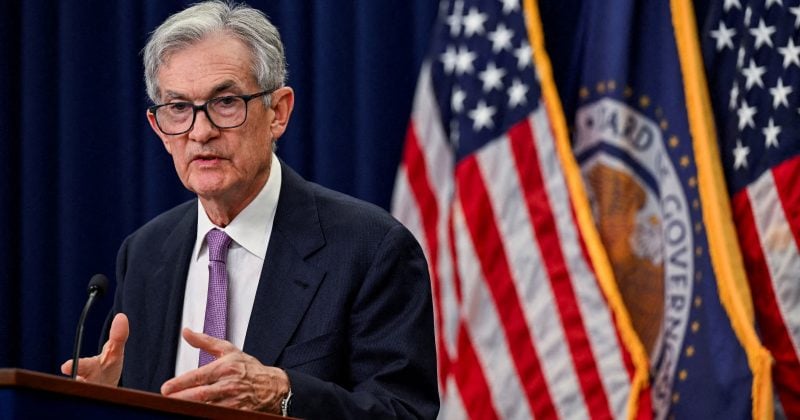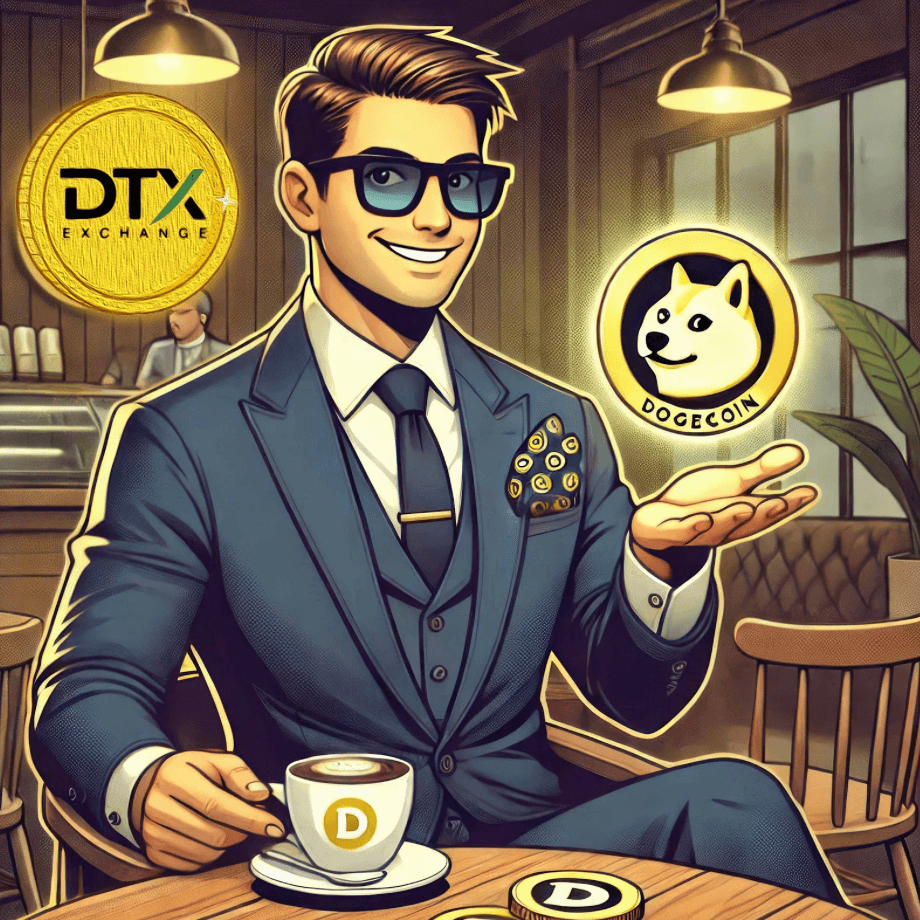The global banking system, burdened by decades-old infrastructure, has struggled to keep pace with the demands of the digital age. Transactions in countries like the U.S. still take at least one business day to process due to reliance on outdated networks like ACH despite many countries and regions, as well as fintech apps, being able to offer instant transfers.
CrossFi was born from the mission to usher this transformation, bridging the traditional and digital financial worlds into one unified ecosystem with truly global capabilities.
By integrating the advantages of blockchain’s decentralization, security, and transparency with the reliability and familiarity of traditional banking, CrossFi delivers a platform designed for the modern age, empowering users to seamlessly transition between fiat and cryptocurrency.

Many banks continue to use programming languages such as COBOL, a relic of the mid-20th century, making system updates complex and costly. Meanwhile, their user-facing apps and web platforms often lack intuitive design and functionality, leaving customers dissatisfied in an era dominated by seamless digital experiences.
In contrast, fintech and open banking have redefined financial services, allowing them to experience rapid and sustained growth over the last few years.
Free from legacy constraints, these innovators leverage modern technologies to offer instant payments, global interoperability, and deep integration with digital ecosystems.
Solutions like real-time settlement, advanced API-based integrations, and tailored user experiences have positioned fintech as a more agile and consumer-friendly alternative to traditional banks. The only problem? They still rely on existing legacy financial structures, centralized networks, and local currencies.
The potential for programmable money and automated smart contracts unlocks a future where financial services are faster, more accessible, and more equitable.
Blockchain and crypto take this revolution further by fixing the limits that fintech and open banking still face today. By enabling decentralized, borderless, and transparent financial systems, they promise to eliminate intermediaries, reduce costs, and increase financial inclusion while offering truly global financial assets.
What is CrossFi?
Founded in 2023, CrossFi is a decentralized financial ecosystem designed to bridge traditional banking with the world of cryptocurrency. At its core, it offers a Layer 1 blockchain with modular architecture capable of delivering levels of interoperability, scalability, performance, and functionality not offered by any major blockchain network.
The CrossFi ecosystem is built to address inefficiencies in both traditional finance and decentralized finance (DeFi). It includes a non-custodial payment gateway that connects directly with Web3 wallets, enabling users to maintain control of their funds without relying on intermediaries. This approach ensures secure, transparent transactions and seamless integration of crypto and fiat currencies.

In addition to its blockchain, the CrossFi ecosystem encompasses a comprehensive suite of tools and services, such as its DeFi platform, digital asset mining and exchange platform, and an all-in-one banking app.
The ecosystem also includes a decentralized debit card, which allows users to spend cryptocurrencies directly from their wallets. To drive ecosystem development, the CrossFi Foundation supports innovation and growth within the network.
CrossFi’s first feature was launched in March of 2023 when the CrossFi chain went live, serving as the base of the ecosystem.
The project has reached multiple major milestones ever since, like being listed on major exchanges like MEXC Global and HTX, platforms like CoinMarketCap, running its own large-scale events in Vietnam, winning HTX’s Huobi Prime Vote 7 contest, launching the foundation, etc.
Over these years, CrossFi has also established partners with projects like Beatland, Uniswap, PancakeSwap, Metamask, Gnome Finance, and many more.
CrossFi’s Features
The CrossFi ecosystem combines cutting-edge blockchain technology with practical tools to create a bridge between traditional and decentralized financial systems. By combining both web3 and traditional technologies, CrossFi is easily accessible to users who might be new to crypto while remaining valuable for long-time crypto veterans.
CrossFi Chain
CrossFi Chain is a Layer 1 blockchain built for scalability and interoperability. Its modular architecture integrates Cosmos and Ethereum Virtual Machine (EVM), enabling the chain to achieve up to 1 million operations per second. This unprecedented capacity allows for seamless integration across networks, supporting developers with intuitive tools and offering users a reliable, high-performance environment for financial interactions.

Both Cosmos and Ethereum play different roles in the CrossFi chain. Whereas Cosmos is responsible for reaching consensus, coin emission, and the production, verification, and transaction of blocks, Ethereum’s Virtual Machine handles the smart contracts, and deployment of dApps, and ensures full EVM compatibility.
The result is the use of a Delegated Proof of Stake consensus protocol which block time can be reduced to as little as 1 second, allowing the network to process up to 100 operations per transaction and 10,000 transactions per second. All of this with a basic transaction fee to the user of only $0.02 per transaction.
CrossFi APP
The CrossFi APP serves as a comprehensive Web3 banking solution that combines fiat and cryptocurrency functionalities.

Through this platform, users can access the VISA network via the CrossFi Card for non-custodial payments, execute cross-border transfers through SWIFT and IBAN, and manage peer-to-peer transfers by card number. The app’s multi-currency card feature, paired with competitive currency exchange rates, simplifies global transactions.
CrossFi xAPP
Designed for DeFi enthusiasts and newcomers alike, the CrossFi xAPP expands the ecosystem with tools for advanced decentralized finance operations.

Users can explore investment strategies, acquire native CrossFi assets like XFI and XUSD, and engage with liquidity pools through the CrossFi Automated Market Maker (AMM). Other features include currency swapping, bridge functionality, staking, rewards, escrows, and more.
CrossFi Foundation
The CrossFi Foundation powers the ecosystem’s growth through innovation and community engagement. This self-regulating non-profit organization supports development by funding grants such as its $50 million grant program, hosting hackathons, and facilitating the integration of new projects.

With campaigns aimed at user acquisition and influencer collaboration, the foundation strengthens CrossFi’s mission to revolutionize financial services by bringing new key players and products to the ecosystem.
The Team
The CrossFi team is made up of professionals with solid expertise across various sectors, from blockchain to traditional finance, ensuring that the project benefits from a wealth of experience and knowledge.
The leadership, for instance, includes experts like Alexander Mamasidikov, a recognized figure in the blockchain and digital marketing space, who’s been behind numerous successful international projects and currently serves as the CEO and Chief Ideologist of the project.
Alexander is joined by Chief Growth Officer Philip Alexeev, who brings a wealth of experience in growth strategy from top Web3 projects like Binance and Decentraland, playing a crucial role in CrossFi’s expansion. Additionally, Christina Sidfeldt Welin serves as CEO in Hong Kong, adding a strong foundation of governance and compliance to ensure CrossFi adheres to the highest standards across global markets.
What sets CrossFi apart is not only its leadership but also its partnerships with some of the biggest names in the industry. Collaborations with projects like Beatland, Uniswap, PancakeSwap, and Metamask provide CrossFi with a strong foundation in DeFi and blockchain ecosystems, further solidifying its reputation as an innovative, reliable player in the market.
Conclusion
For years, the evolution of financial services has been promised but slow to materialize. Despite numerous discussions around modernization, it has taken far too long for these changes to come to fruition. CrossFi is breaking the walls between traditional finance and the finance that prevented this modernization by addressing the core inefficiencies that plague existing banking systems.
By merging decentralized finance and established banking solutions, CrossFi aims to provide a modern platform for users to fluidly navigate between fiat and cryptocurrencies. It tackles the critical issues of slow, costly transactions by implementing a blockchain’s top scalability, reliability, and low transaction fee capabilities.
The ecosystem enables users to enjoy fluid integration with Web3 wallets, non-custodial payments via its Visa-connected card, and advanced DeFi functionalities like liquidity pools and staking, all while staying compliant with global standards.
CrossFi’s innovative approach fills that gap, paving the way for the transformation that the financial world and, most importantly, its users, have been waiting for.
The post CrossFi: Crypto Banking and Blockchain Solutions appeared first on Blockonomi.

 2 months ago
35
2 months ago
35









 English (US) ·
English (US) ·